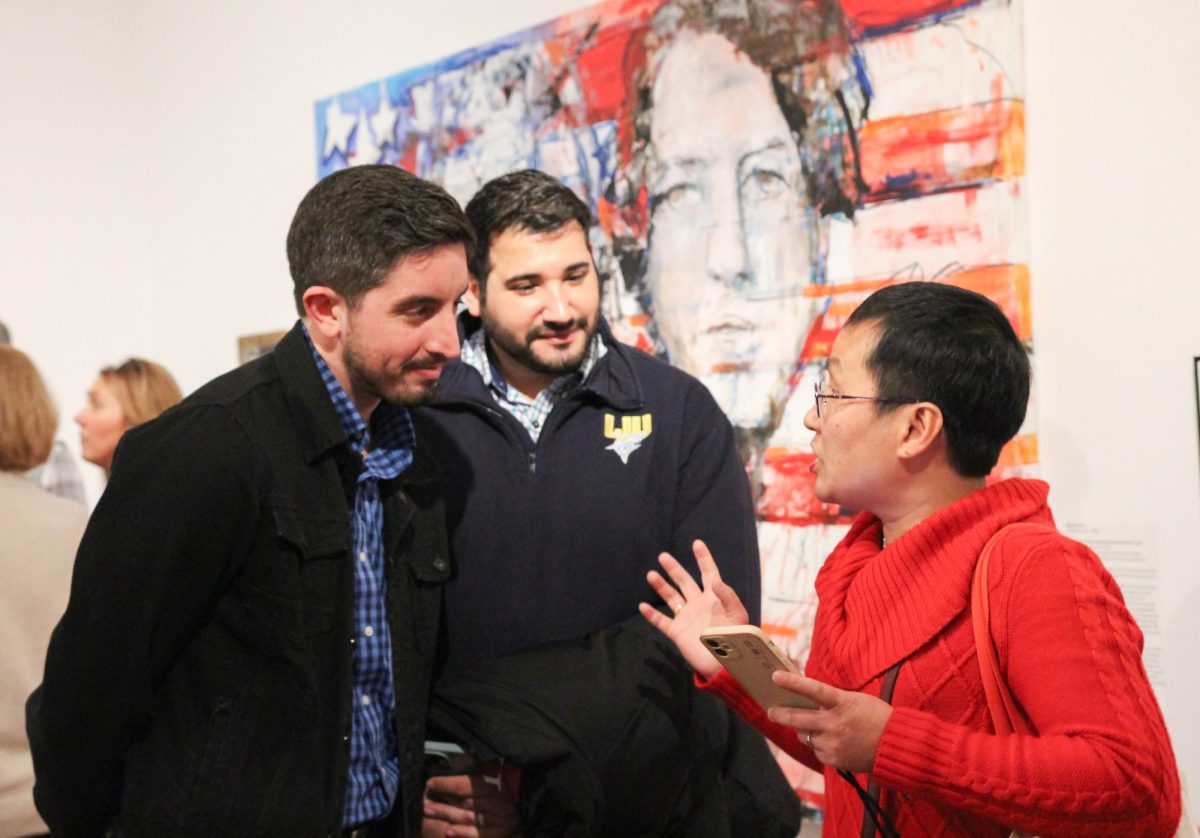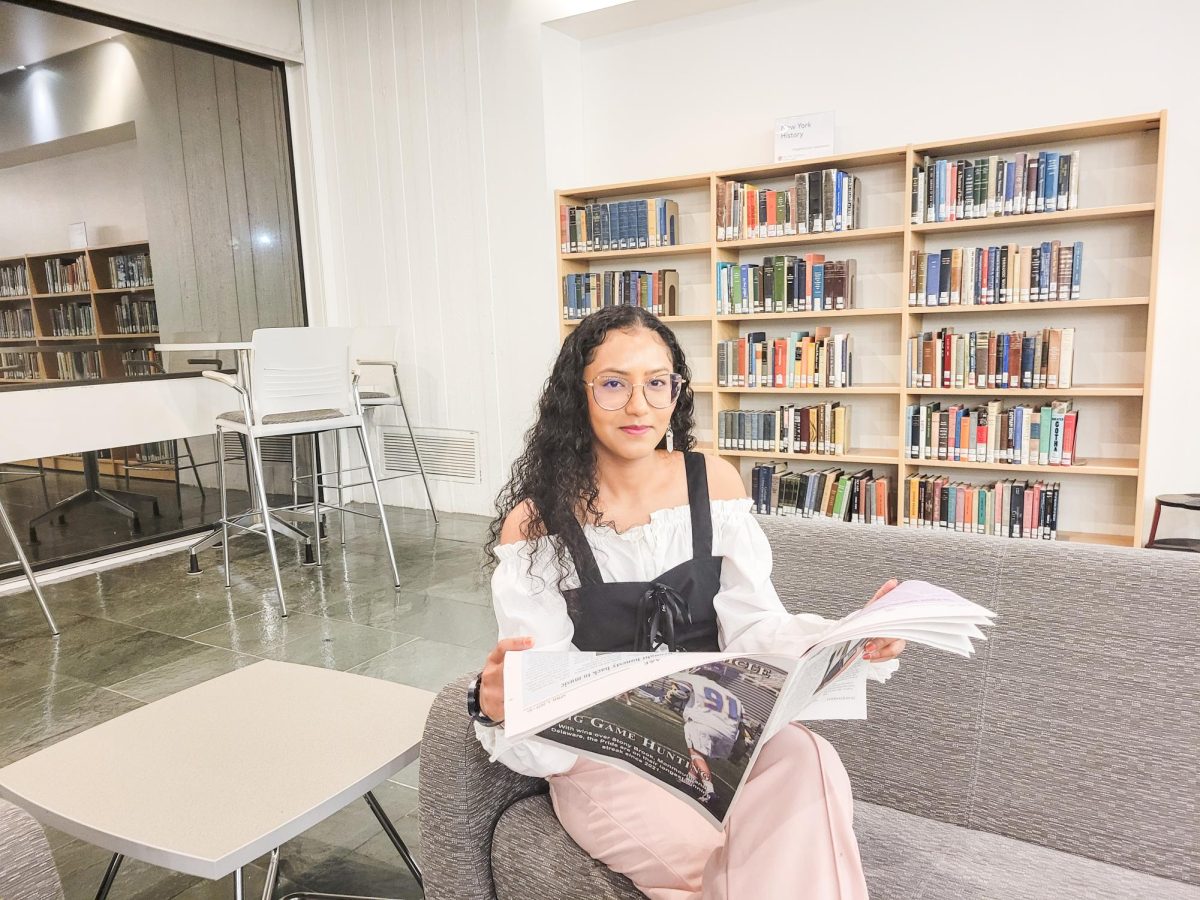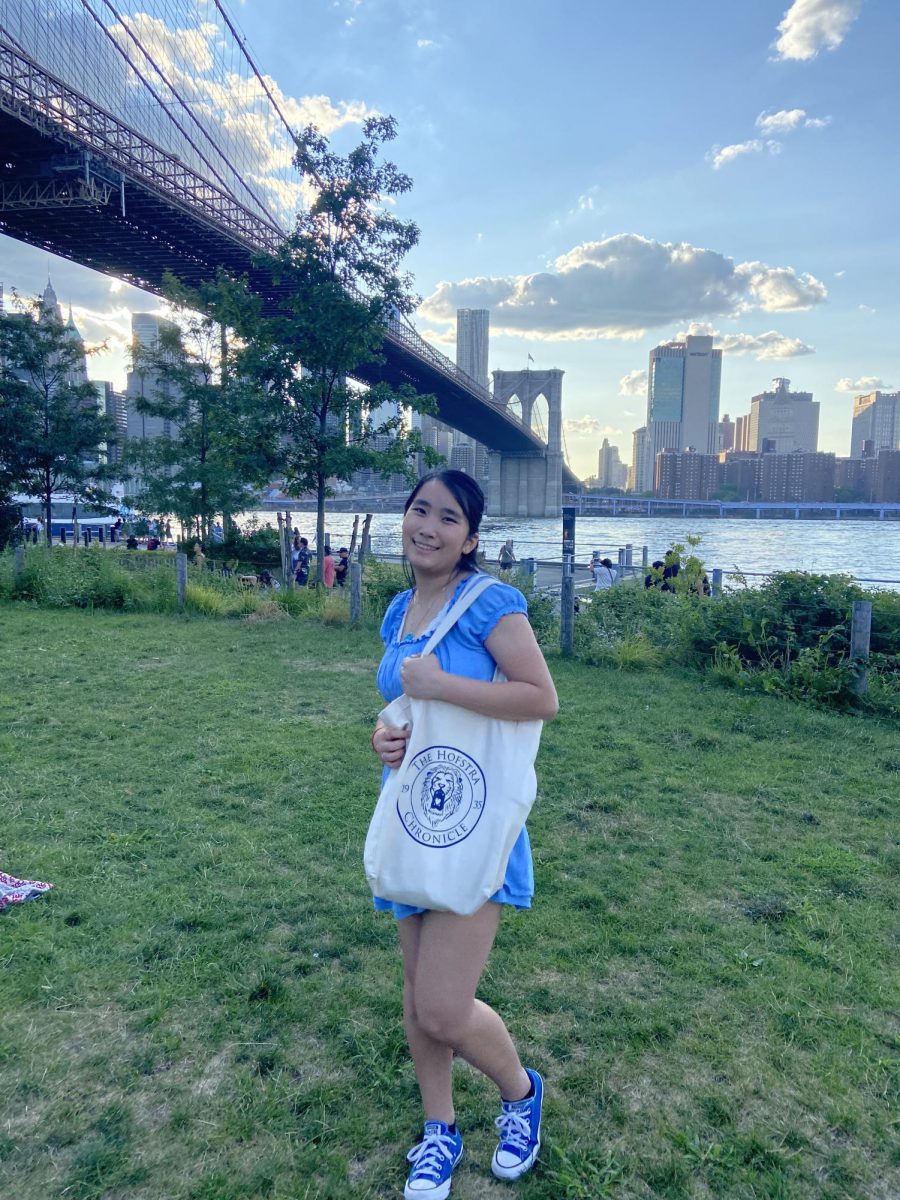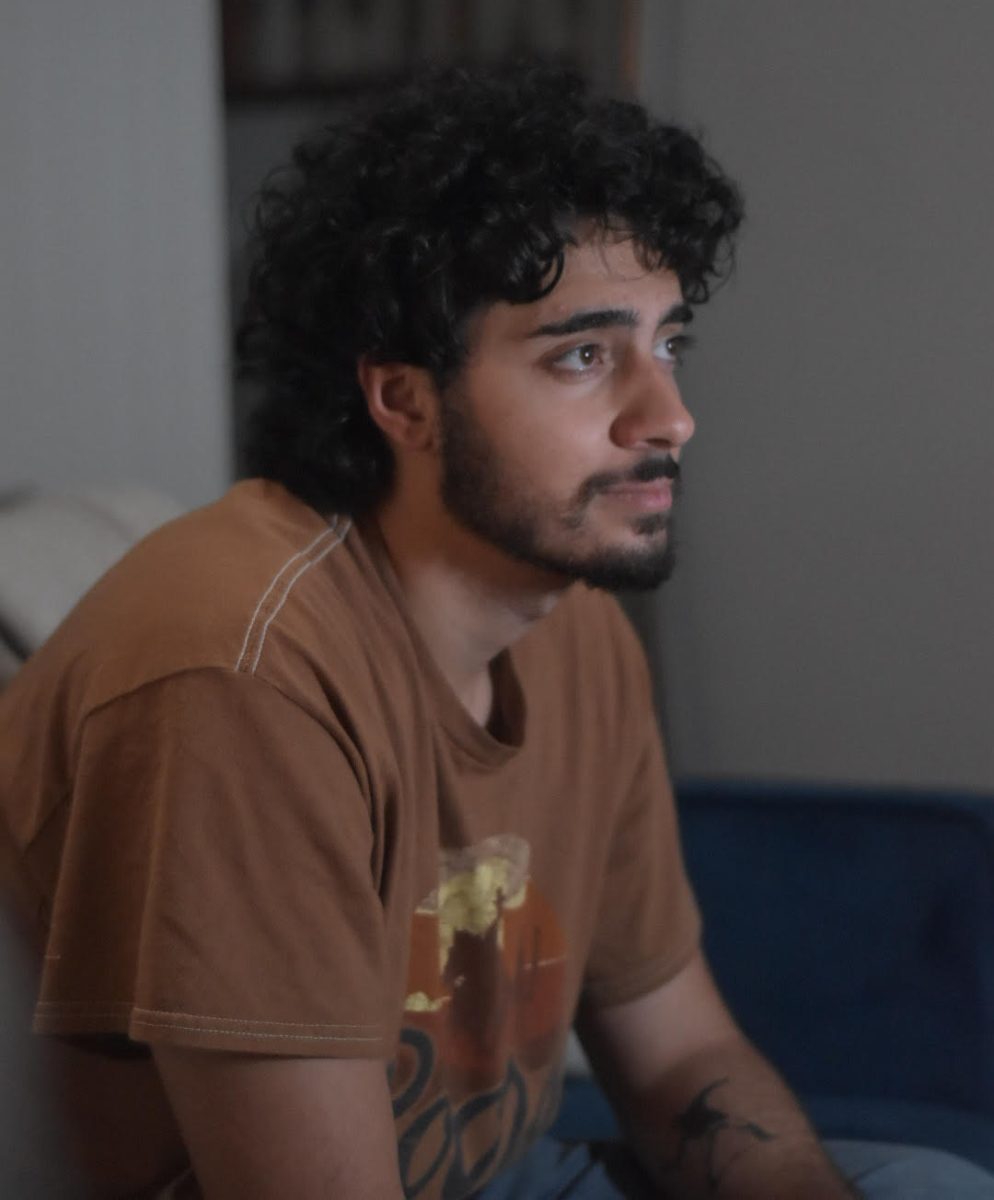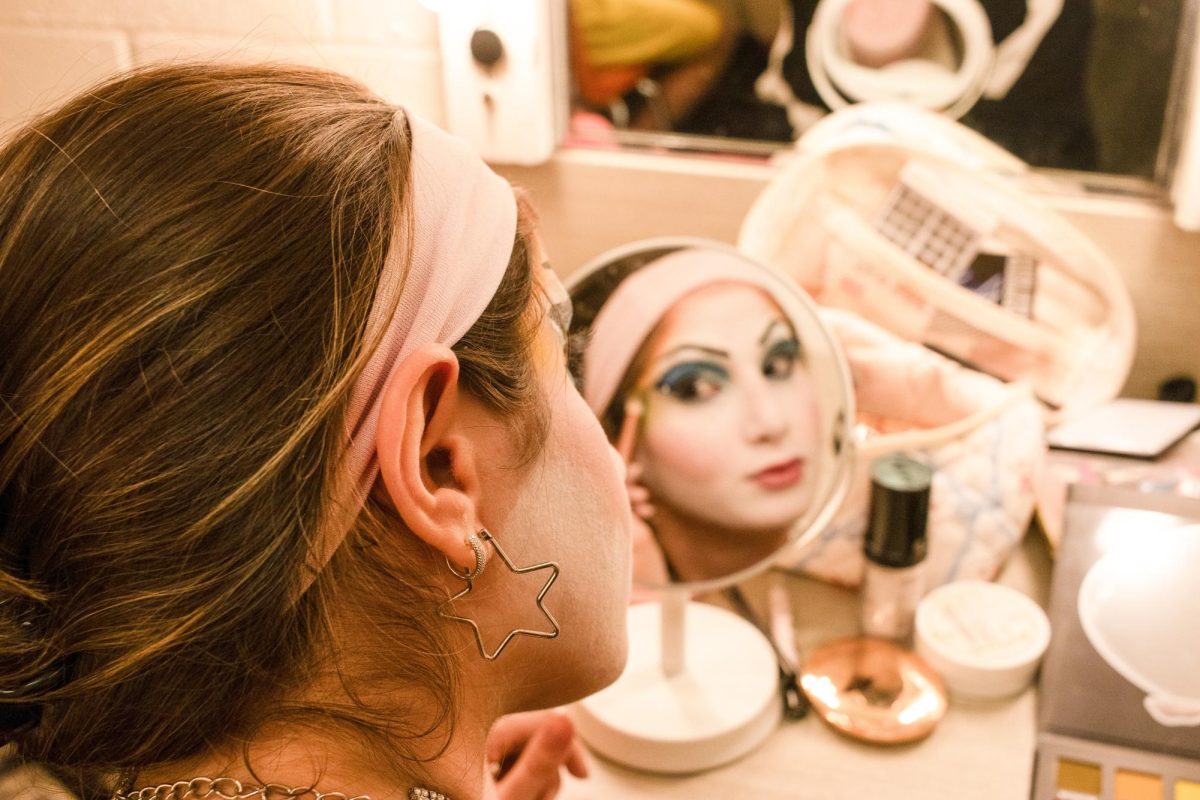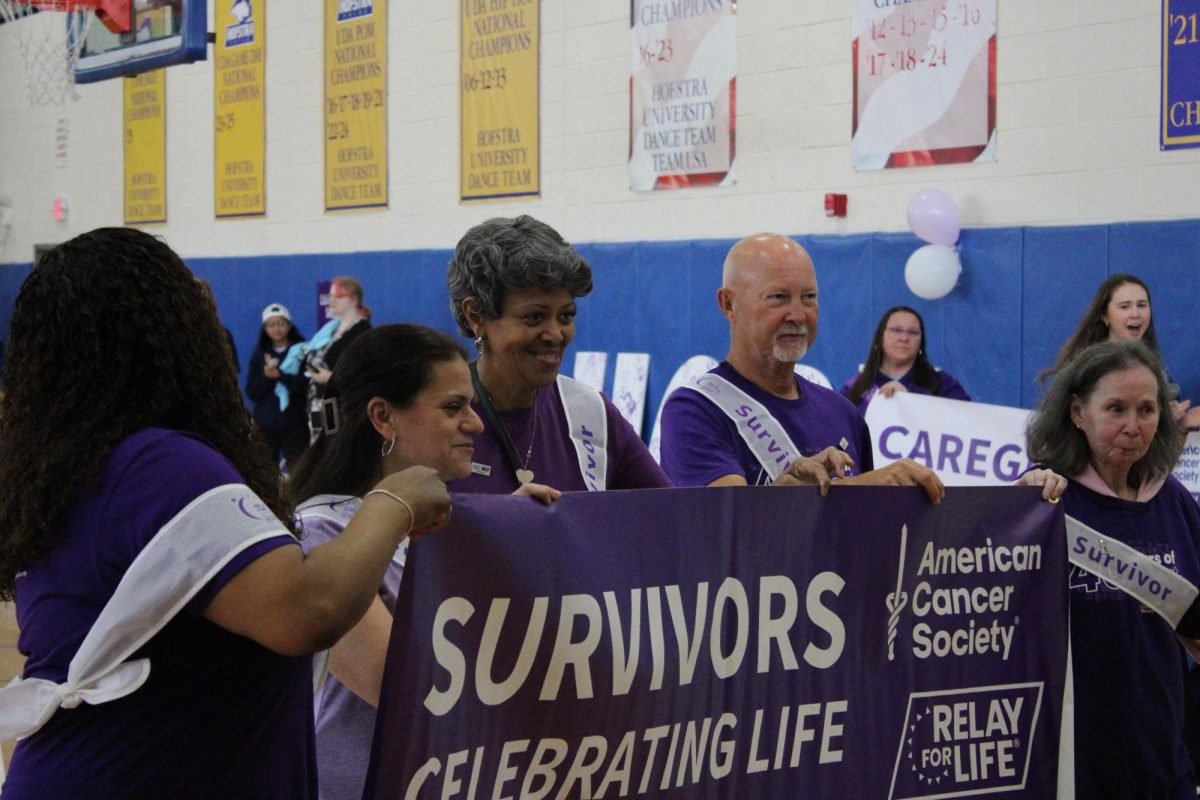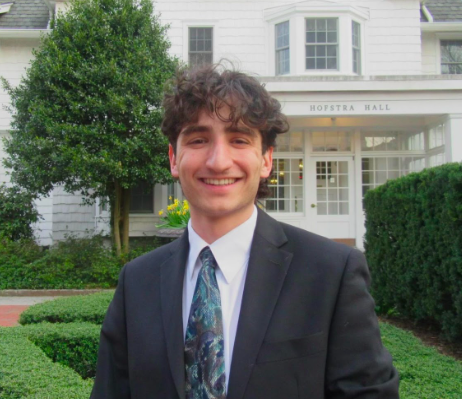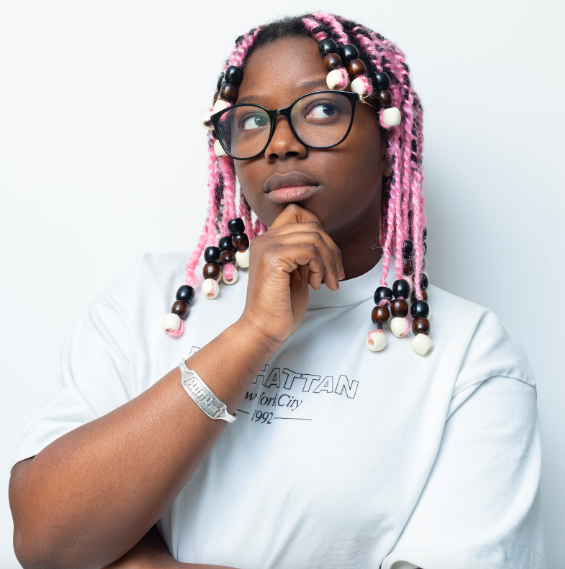A group of local community members showed support for the “EVERY body, EVERY mind” exhibit.
The Hofstra University Museum of Art hosted an opening reception for its new “EVERY body, EVERY mind” exhibit in the Emily Lowe Gallery. Over 220 people attended the event, breaking the record for the most attended Hofstra Museum opening exhibit.
The “EVERY body, EVERY mind” exhibit honors the 35th anniversary of the Americans with Disabilities Act (ADA) and features works from artists with disabilities and works focusing on disability. There is also a significant portion of the exhibit dedicated to Hofstra’s disability history.
To approach a complex topic such as disability, the museum collaborated with Dr. Craig Rustici, Professor of English and the Director of Disability Studies, and Ashley Andree, Learning Specialist in Student Access Services (SAS).
“I was really able to help Sasha [Giordano, director of the Hofstra University Museum of Art,] with identifying other disability rights activists,” Andree said. “The other integral part of this is that [Sasha] relied on me for disability etiquette type of things, as she was planning for this audience, so that was really great to be a part of as well.”
Andree also contributed information about the history of disabilities at Hofstra.
“Well, I advised on the exhibit, and obviously it’s very related to Disability Studies,” Rustici said. “I actually wrote one of the catalog essays which puts the exhibit and disability history into context.”
Rustici provided a key connection to the Viscardi Center, a non-profit organization dedicated to empowering individuals with disabilities through education, workforce training and civic engagement. The murals on display in the exhibit were painted by and borrowed from the Viscardi Center students.
The gallery also included an incredibly unique piece: a three-dimensional replica of an African artifact from Hofstra’s collection. This replica was created by Krishan Rathee and Gianluca Tredici, two junior mechanical engineering students.
“The point of creating the replica was so that those that are visually impaired can have a physical piece to interact with without obviously touching and possibly ruining the true artifact,” Tredici said. “[W]e worked as closely as possible with Sasha and the museum to, you know, correctly replicate the geometry and the feel as much as possible, so that those that are visually impaired can have almost a braille-like experience, and so they could really have an interaction with the piece – the artifact – at the museum, unlike pretty much any other art piece here.”
The reception featured an incredibly diverse audience comprised of Hofstra students, faculty, other members of the community and two of the artists whose work is featured in the exhibition. Laura Nugent-Carter is the artist of “11 Small Knit Sweaters” and “100 Knit Hats,” and Samantha Yergo is the artist of “BK Prosthetic Skin” and “Full Slipper Prosthesis-Adult”.
Some students like Nicole Karaman, junior physical education and health major, found the exhibition’s pieces on Hofstra’s disability history incredibly interesting.
“The first [exhibit] I saw with all the old pictures of what campus used to look like and where … that one was really cool,” Karaman said. “I liked seeing what’s changed, what’s the same and how, even way back then, we had all these different routes that you could take as a person with a disability.”
Faculty members such as Patricia Navarra, Adjunct Professor of Writing Studies, found other aspects of the exhibit that resonated emotionally.
“The prosthetics are, in a particular way, incredibly moving … When you see it, what you see is a human hand, and it takes your brain a moment to accept that this has been provided to facilitate somebody’s life,” Navarra said. “It was like you see the beauty of what’s been crafted, and then you realize what the purpose is and the dignity of it.”
After a speech from Giordano, patrons could enter the neighboring dance studio to enjoy refreshments including fruits, cheese and red and white wine.

